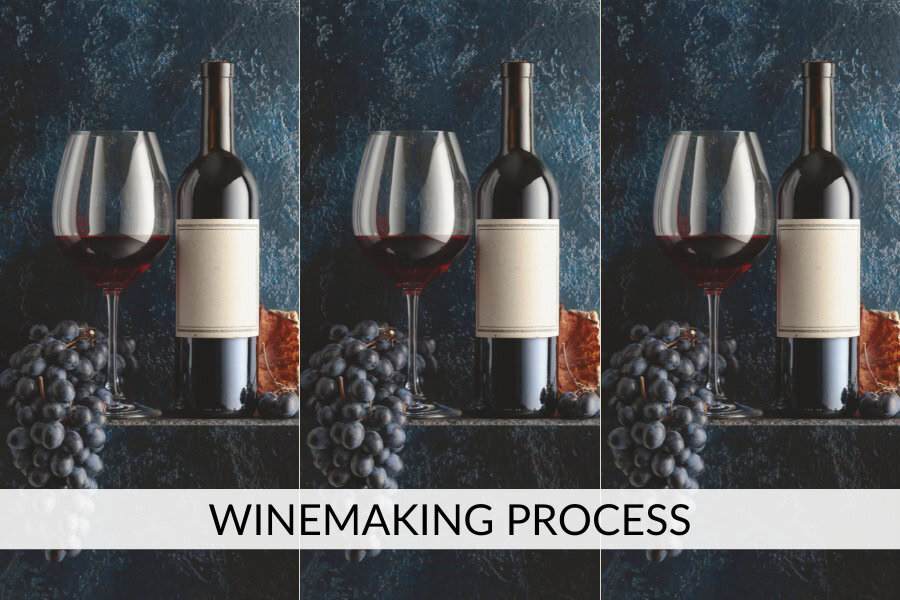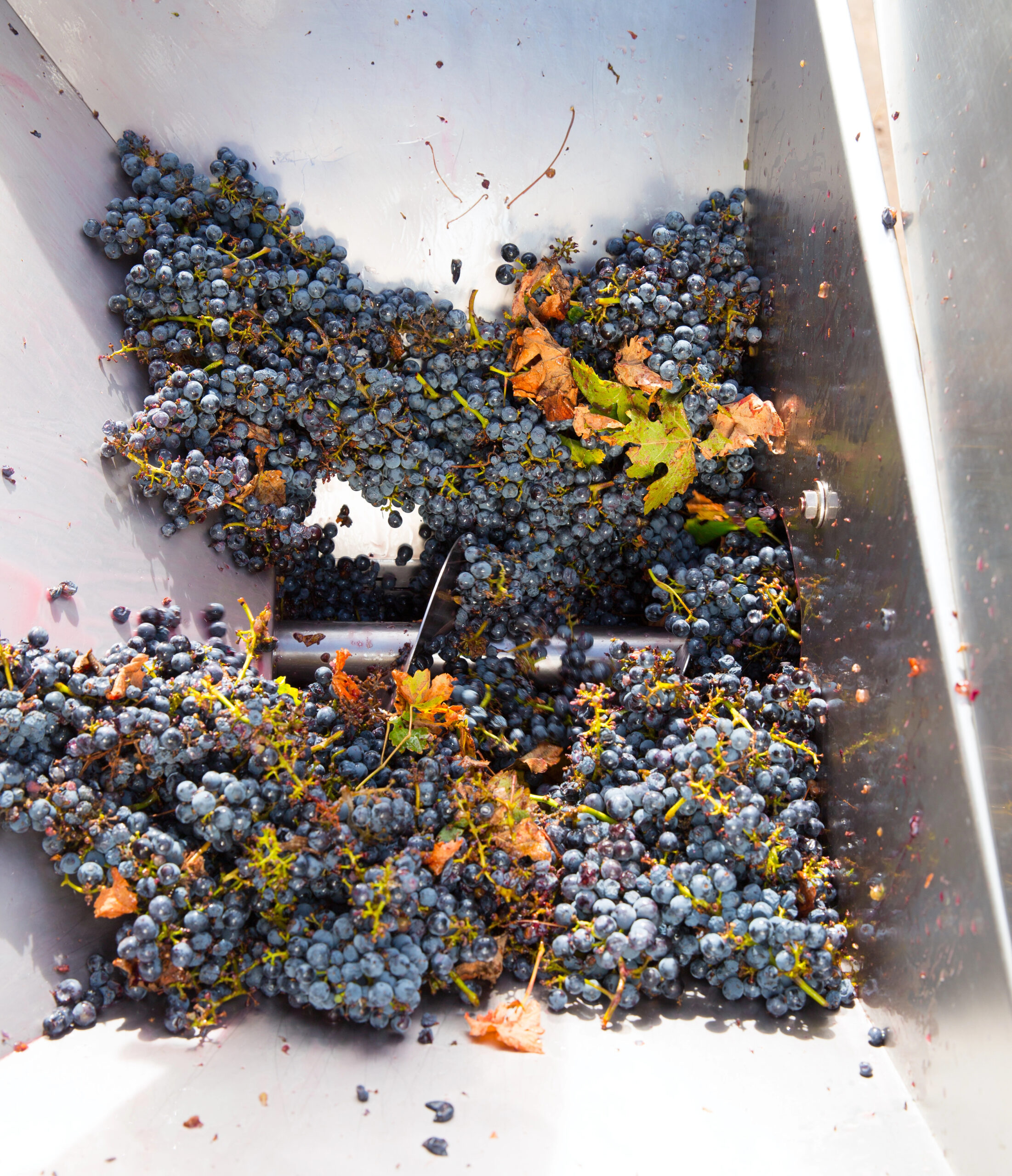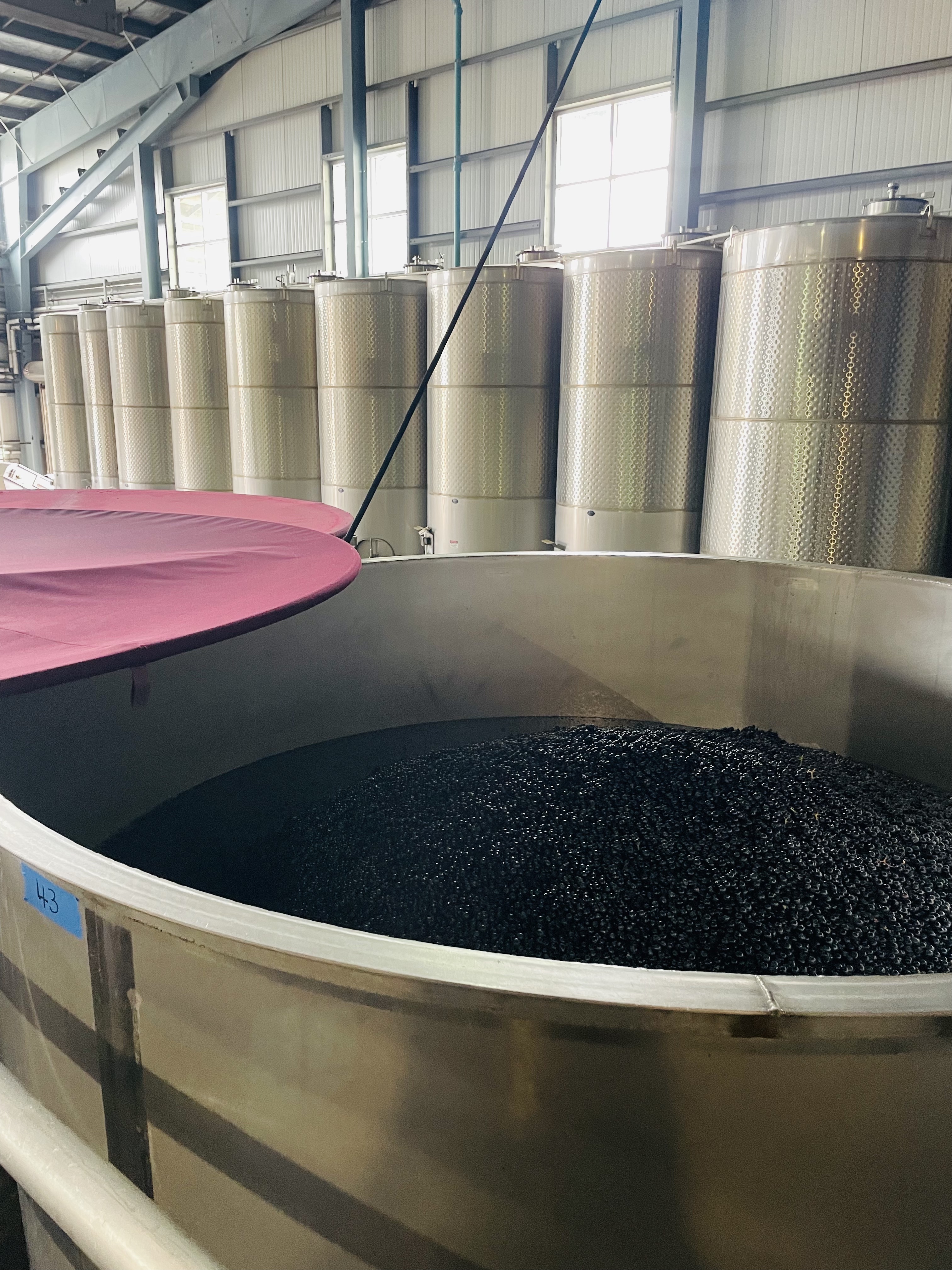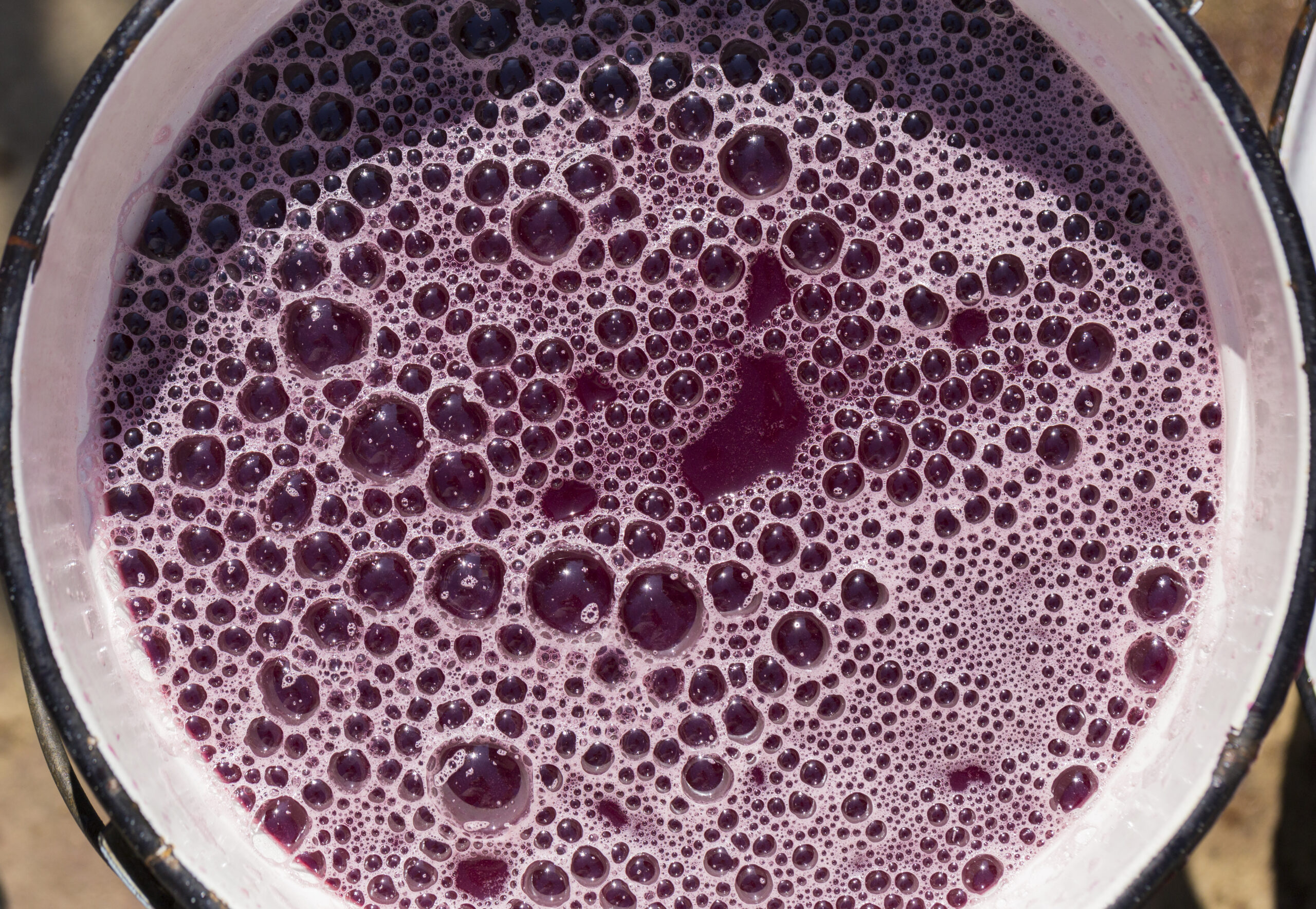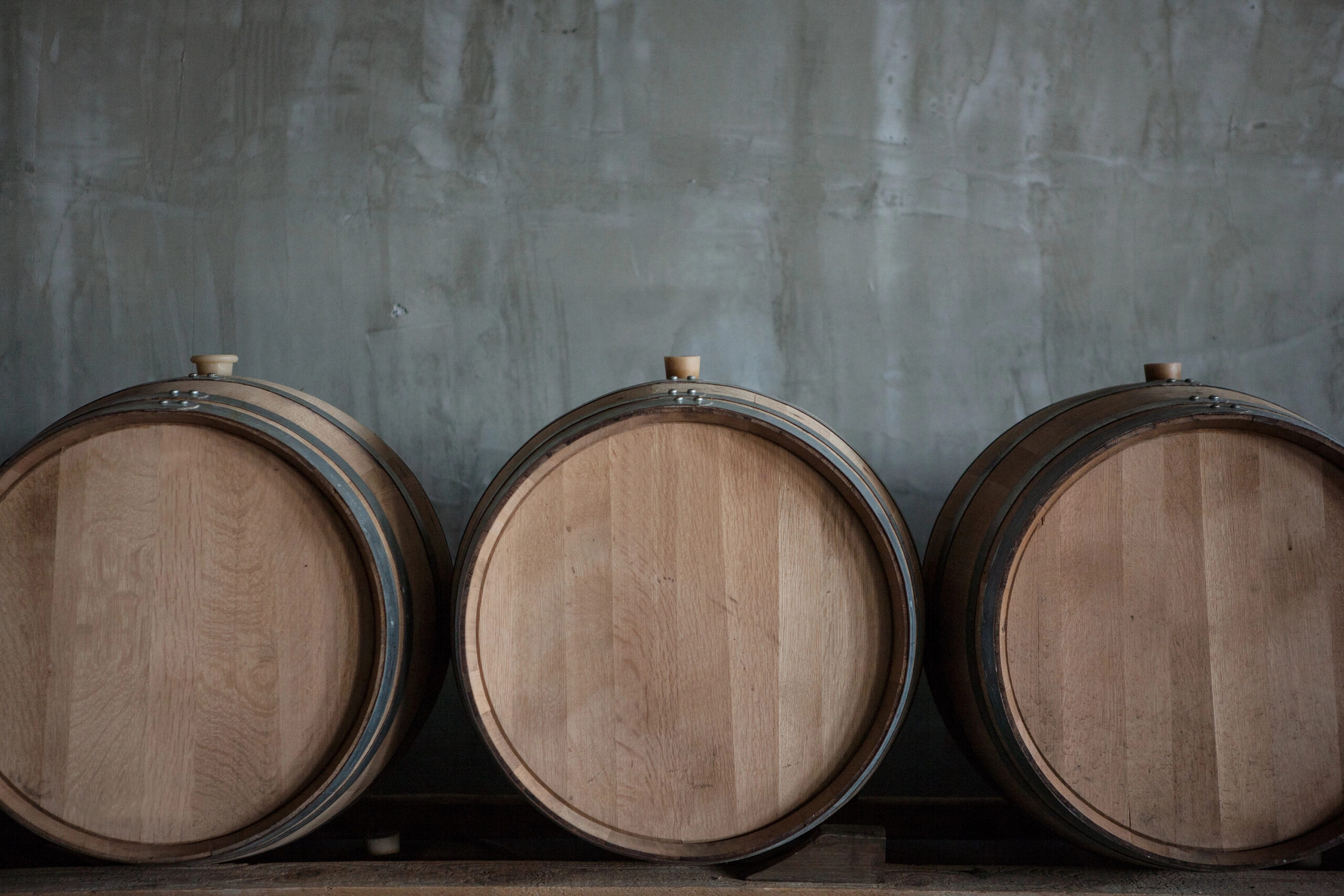The winemaking process can feel like a frantic frenzy of fruit juices, yeast, barrels, (of course) wine, chemicals, and more. Though, the basic components of the winemaking process are surprisingly more straight forward than you are led to believe...
While I worked tirelessly in Napa Valley making wine, I saw first hand the wine making process and what winemakers actually do. Then, transitioned those same techniques to homemade wine.
The process seems long, dreary, strenuous, and unreachable to most. But, here I lay out the most straight forward steps involved in the winemaking process so you can understand, and ultimately, recreate at home.
You will understand the top 5 steps of how professional, and at home, winemakers convert fruit into dreamy creations, the grape wine making process and the wine making process at home!
This post is all about the winemaking process.
Basic Concepts of The Wine Making Process
As we begin to look into the wine making process, we are focusing on fruit wines and grape wines. Fruit wines are wines more easily made at home. For example, plum wine, apple wine, strawberry wine, etc.
Grape wines can be made at home using winemaking kits. But, you most likely know grape wines from Napa Valley, France, Spain, etc.
The starting components of winemaking are:
- Growing the fruit
- Harvesting the fruit
Many winemakers get their degrees in viticulture AND winemaking. Viticulture is the study of grape vines, aka vineyards.
Winemakers are actively involved in the grapes entire life all the way up until harvesting.
Harvesting grapes happens during the season: for northern hemisphere it occurs in August to December. For the southern hemisphere it occurs January to April.
We will not dive too deep into the growing and harvest of the fruit because, honestly, it is pretty self explanatory.
Now, assume we have the fruit already, what are the 5 steps to making wine?
- Process the fruit
- Stabilize the juices
- Primary fermentation
- Secondary fermentation
- Aging & bottling
From processing the fruit to bottling, winemakers tend to follow these basic components. However, there are other expert-level processes that can occur (depending on the winemaker).
For example, malolactic fermentation, natural fermentation, adding yeast nutrients, adding water, adding sugar, etc. These all depend on the fruit and the winemakers overall goals.
5 Incredibly Straight Forward Steps to the Process of Making Wine
Let's dive into the 5 steps to turn fruit into dreamy wine. Both the professional perspectives and homemade perspectives for the home winemakers!
RELATED POST: Sneak Peak into Winemaking for Beginners (So You Can Uncover the Priceless Secrets)
At home, you can put your fruit through a fruit press, or hand press it.
The processing of fruits in commercial wineries will vary depending on the winemaker and their goals. For example, a winemaker might not de-stem their grapes. Instead they will simply put it into the fermenter.
This is because the winemaker wants to extract more tannins from the stems!
RELATED POST: 5 Simple Must-Do Things to Kickstart Your First Fermentation Project (Fermentation for Beginners)
Cold stabilizing settles the sediment and prevents spontaneous fermentation. While also creating a clearer and cleaner finished wine.
For fruit wines at home, take your covered bowl of fruit juice. Leave on the counter for 2-3 days with pectic enzyme to stabilize homemade wine.
Pectic enzyme helps break down the fruit and increases color, aromatics, sugars, and overall flavors. It can be a very helpful enzyme to the winemaking process at home!
RELATED POST: 15 Powerful Winemaking at Home Tips & Tricks for Unbeatable Wine (No One is Talking About)
Using tools, like a hydrometer, we can closely monitor the winemaking process during fermentation. How fast it's fermenting, how much sugar is left, etc.
The bulk of fermentation will occur in this stage.
An ongoing trend right now is "natural wines". Natural wines are inoculated with the yeast that is naturally occurring on the fruit. The wine making process using natural fermentation is an expert-level fermentation practice.
At home, you can take the traditional route and use wine yeast. Or, you can inoculate your own wine with a wild yeast stater (for a more primitive winemaking process).
RELATED POST: Harness the Power of Wild Yeast | Make Your Own Yeast Starter (In 8 Easy Steps)
In large scale wineries, racking wine into different fermenting vessels is a project, to say the least. We use a commercial sized pump that is thoroughly sanitized to move wine from one place to another.
In homemade wine, we simply use a siphon hose to transfer any ferment into a secondary fermenting vessel.
Secondary fermentation can be a potent part of the process to establish greater wine flavors and aromas, and to clarify the wine using various ingredients.
For example, putting oak chips or herbs into your wines in secondary for greater flavors is a common practice!
Some winemakers will leave their wines in secondary fermentation for up to 3 months. Though, the fermentation will most likely be complete in 2 weeks.
RELATED POST: Everything You Need to Know About Secondary Fermentation
In the wine world, aging wine can be a topic of great depth! What kind of wine it is, where it will be aged, etc are important to know when aging wine.
For some white wines, they tend to be more floral and fruity earlier. Then, as time passes the wine loses those fruity and floral notes.
While deep reds, like Cabernet Sauvignon, are known to be great when aged longer.
How long to age wine, for homemade wine, is a great question that depends on the acidity, tannin levels, ABV, etc.
Alternatively, oxygen levels can play a major role in the winemaking process especially during aging, which is something to keep in mind.
RELATED POST: On-Demand Winemaking Equipment List for Stunning Wines | Get Everything You Need in One Click
Of course, like anything, the wine making process can get really complicated! Though, it really doesn't have to be.
This cheat sheet showed the basic ingredients that go into the process of making wine.
The overall process to make wine can be simple once we understand it.
And now you see the winemaking process at home is pretty straight forward: turn fruit to juice and give it some yeast!

